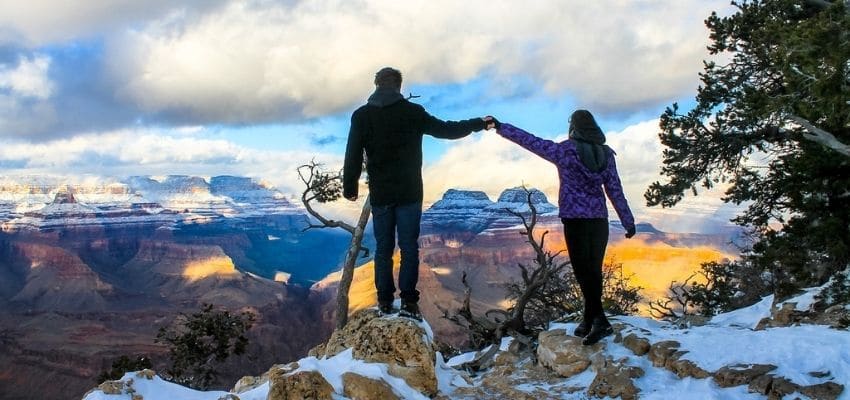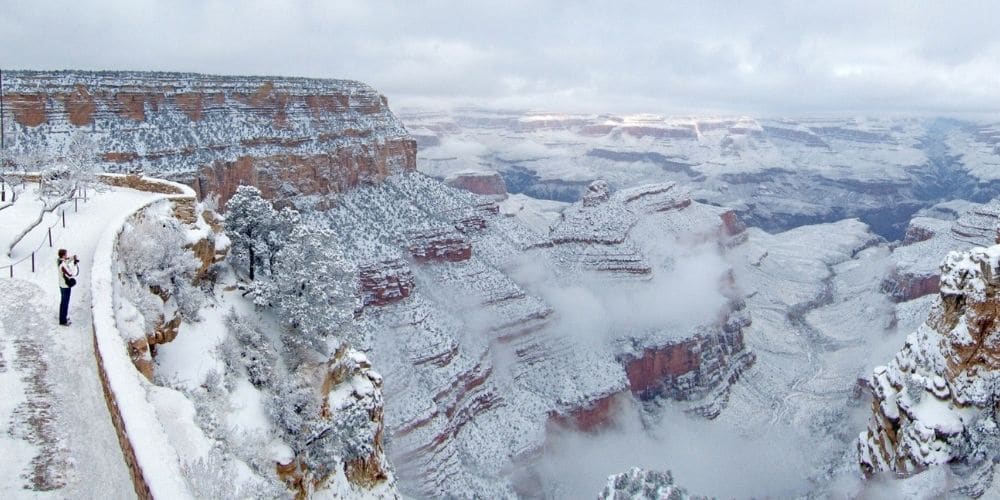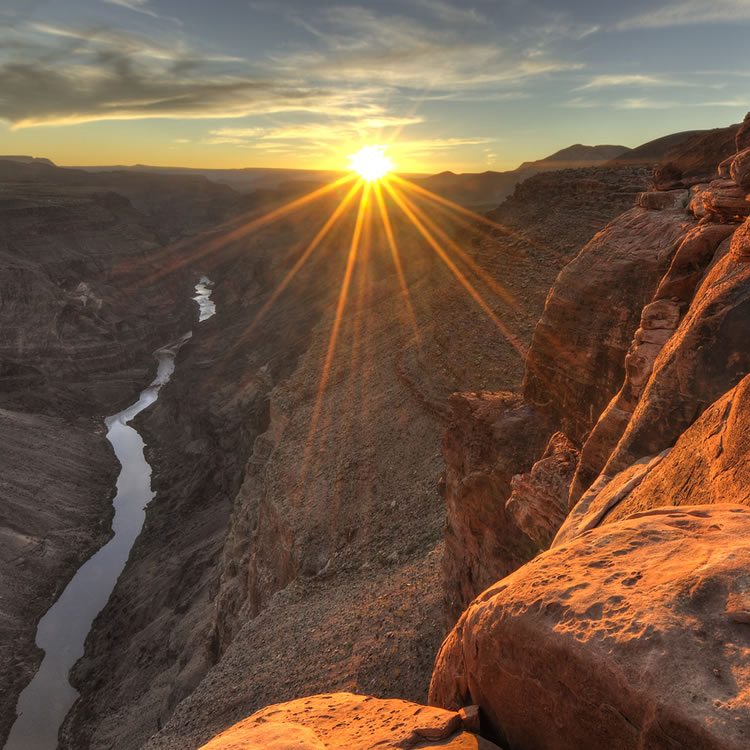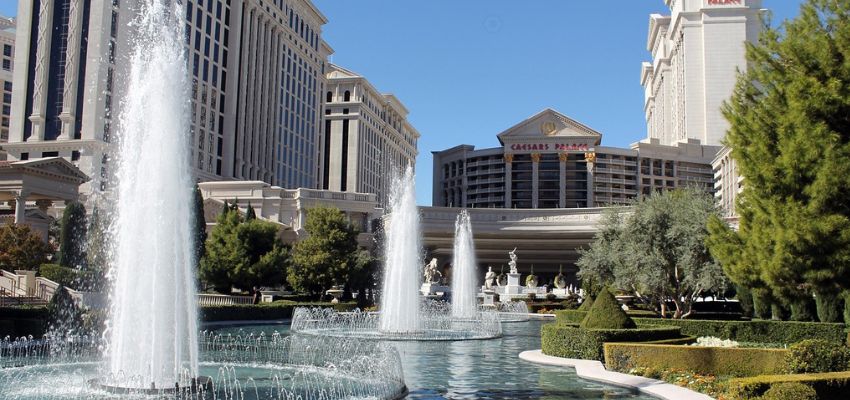Your Guide to Grand Canyon Sunset Times
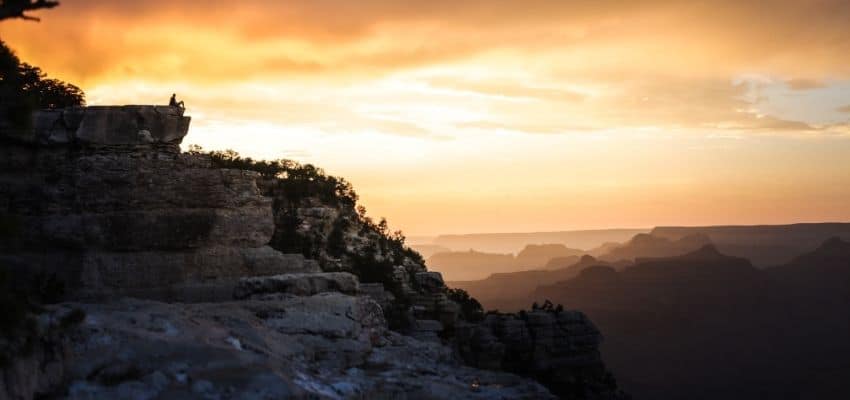
While the Grand Canyon is awe-inspiring no matter what time of day you take it in, many visitors believe there is nothing more beautiful than watching the sun setting over the iconic Canyon’s red rock walls, buttes, and spires.
At every viewpoint, the Grand Canyon is transformed by the setting sun as the fading light and shifting shadows paint the stone’s colours more vibrant, with hues changing from oranges and pinks to purples and reds. Plus, on top of the beauty of the changing sky, the Grand Canyon is also a Dark Sky park, so as the sun sets, you’ll also see an impressive display of emerging stars unimpeded by city skyglow. It is a life changing experience.
If you’re visiting the Grand Canyon and your schedule allows, it’s worth sticking around to catch the sunset. Since the sun sets at a different time every day, the time of year you are visiting makes all the difference:
|
SEASON |
APPROXIMATE SUNSET TIME |
|---|---|
|
Spring |
Between 6:50pm and 8pm |
|
Summer |
Between 6:35pm and 8pm |
|
Fall |
Between 5:15pm and 6:30pm |
|
Winter |
Between 5:30pm and 7:00pm |
Read on to learn more about when to visit each season if you want to catch a Grand Canyon sunset.
Spring (April-June)
Spring is a wonderful time to visit the Grand Canyon. It has nice, temperate weather and it isn’t yet the busy season, so crowds are not as thick and competition for the best sunset viewing spots won’t be as stiff as it is come summer.
Between April and June, you can catch the sunset between 6:50pm and 8pm.
Summer (July-September)
Long summer days mean later sunsets, but larger crowds. If you’re visiting the Grand Canyon in the summer, plan to stay later into the evening for the best views, and be prepared to get to your chosen viewpoint early. The sun sets after 7:00pm in July and August, and after 6pm in September.
Sunset Spotting Tips from NPS:
“During the summer viewpoints can be crowded. Late summer may bring dramatic thunderstorms, but too many clouds could mean no sunlight in the canyon. Just the right amount of dust or smoke can make a sunset more colorful.”
Fall (October-December)
From October to the end of December, you will find the sunset creeping up from a little before 6:30pm to as early as 5:15pm as the days grow shorter. The crowds will diminish significantly with kids back in school and the weather turning colder, so if you don’t mind an off-season experience, you can take advantage of the smaller audience and a shorter day to see the sunset in time to still catch your evening plans, or, alternatively, more time with the night sky if you’d prefer to hang around for stargazing.
Sunset Spotting Tips from Canyon Tours:
The Grand Canyon is located in the Mountain Time Zone (MT) and does not observe Daylight Saving Time. Keep this in mind when visiting from states in different time zones, such as Las Vegas. Vegas is on Pacific Time (PT) and does observe daylight saving time, meaning that between April and October, it is the same time at the Grand Canyon as it is in Las Vegas, but between November and March, Las Vegas is one hour behind the Grand Canyon.
Winter (January-March)
After the winter solstice (typically around December 21), the days start to get longer again. Like in the fall, there are fewer crowds at the Grand Canyon at this time of year, so if you don’t mind some snow you can likely snag a good spot to see the sunset—and maybe even a person-free picture to remember it by. As you start to get further away from the solstice, the sun will begin to set later and later, but will still be between 5:30pm and 7pm between the months of January and March.
Learn more about visiting the Grand Canyon in the winter:
What is the best way to see the sunset at the Grand Canyon?
The best way to see the sunset is to get to the Canyon on your own so you can ensure you don’t have to leave before the sun goes down. If you’d prefer not to worry about driving to the Grand Canyon, there are also a number of guided tours that include sunset viewings.
No matter what time of year you visit, be sure to check the weather forecast before you depart—weather is changeable at the Canyon at any time of year, and it could be overcast.
Grand Canyon Exclusive Floor Landing Helicopter Sunset Tour
$649.00 – $669.00Sunset Spotting Tips from NPS:
“Plan to arrive at your viewpoint as much as 90 minutes before sunset and stay at least 10 minutes after the sun has set and no longer illuminates the buttes and pinnacles in the canyon, don’t rush off —the sky may light up red, pink or orange.”
Conclusion
The time of year you can or want to visit the Grand Canyon will impact what time you need to be there in order to see the splendor of the sunset. The closer you get to the summer solstice the later you have to be at the Canyon to catch it, whereas in December, you only have to be there between 5 and 6 pm Mountain Time.
For more exact sunset times, we recommend you visit the NPS Sunrise/ Sunset Times and Moon Phases – Grand Canyon National Park.
For the best places to see the sunset at the Grand Canyon, visit our guide:

